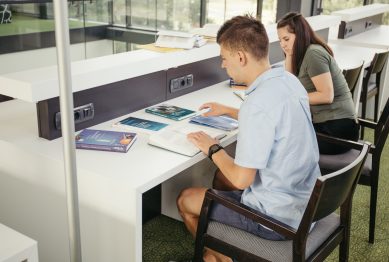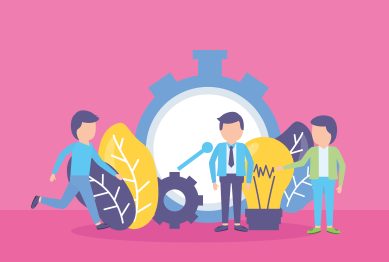In a world where speed is often seen as a virtue, can we afford to let ideas evolve naturally? Discover how slowing down your creative process could lead to more meaningful and innovative outcomes. The rush may be costing you more than you think.

The Speed of Innovation vs. Creativity
In the modern era of constant connectivity and the expectation to move quickly, the pressure to generate ideas instantly is intense. Whether you’re a content creator, an entrepreneur, or someone working in a creative field, there’s an unspoken expectation that innovation must come fast. But is this constant rush the best approach to fostering creativity? More and more research is showing that forcing yourself into rapid decision-making may lead to burnout and stunted creative growth.
We’ve all been there: deadlines loom, to-do lists grow longer, and the pressure to produce the next great idea feels overwhelming. It’s easy to believe that the faster we work, the more productive we’ll be. After all, speed has become synonymous with efficiency in our modern, fast-paced world. But what if the race to produce leads to diminishing returns on our creativity?
The Power of Slowing Down
For years, Silicon Valley and other innovation hubs have embraced the idea of “fail fast, fail often.” While this mindset can drive progress, it often neglects a crucial element of the creative process: the time to nurture ideas. Rushing can create shallow thinking, limiting the potential for groundbreaking solutions. Instead, taking time to let an idea sit and evolve can lead to more profound insights and discoveries.
One of the leading proponents of slowing down is Cal Newport, author of Deep Work: Rules for Focused Success in a Distracted World. Newport suggests that the best ideas come not in the middle of chaos, but in moments of solitude and focus, where the mind can deeply engage with the problem at hand without interruptions (Newport, 2016). When we take the time to reflect and refine, we not only create more thoughtful solutions, but we also avoid the mental fatigue that comes with constant rushing.
This idea of slowing down also resonates with the principles of mindfulness. Being present in the moment, listening to your thoughts, and allowing them to unfold naturally can often lead to the best insights. Creativity thrives in environments where ideas have space to breathe, evolve, and be refined over time, not in environments where the pressure to produce outweighs the need to think critically.
Understanding the Creative Process: Why Timing Matters
The creative process isn’t linear—it ebbs and flows. Many great ideas come not in the initial brainstorming session but after days or weeks of subconscious processing. This is where ideas mature, merge, and solidify. When you rush through this process, you miss out on these crucial “Aha!” moments.
Research by psychologist Mihaly Csikszentmihalyi, who studied creativity for decades, shows that creative insight often happens when we least expect it—during moments of rest, relaxation, or seemingly unproductive downtime. Csikszentmihalyi refers to this state as flow, where the mind is deeply engaged in an activity and creativity flows naturally, without force (Csikszentmihalyi, 1990).
When we allow our minds to settle, creativity emerges from a deep place of understanding and connection. It’s not about rushing to a solution but instead cultivating an environment where the mind can freely make connections. Flow states, which are often characterized by an effortless focus and loss of self-consciousness, occur naturally when there is no deadline looming. Rather than rushing to finish a project, leaning into the creative process with patience allows for far more complex and valuable outcomes.
Allowing yourself the space to think and reflect without the pressure of deadlines can make a significant difference. You might find that some of your best ideas come when you’re not consciously trying to create them. This is the magic of slowing down—your brain works on a deeper level, connecting dots that you might not have noticed when rushing.
The Mental Health Aspect: Avoiding Burnout
In our fast-paced world, mental health has become a key concern. Rushing ideas not only compromises creativity but also increases the risk of burnout. When creative professionals rush, they often push themselves too hard, leading to mental exhaustion and a lack of inspiration. Research has shown that the best creative outputs come when individuals feel energized, rested, and free from the pressure of constant deadlines (Baker, 2017).
The mental health aspects of rushing are often understated. The more we push ourselves to perform, the more we begin to feel the negative consequences of working at high speeds. Constantly being on the go, feeling the pressure of a never-ending to-do list, and never taking breaks takes its toll on both our minds and bodies. This not only affects our creativity but our overall well-being, as the relentless pace makes us more susceptible to stress, anxiety, and burnout.
One way to avoid burnout and unlock true creativity is through practices like mindfulness and meditation, which encourage slowing down and being present. When we stop rushing and give ourselves space to breathe, we allow our minds to refresh, leading to more powerful and inspired ideas. Allowing time for mental rest doesn’t just help prevent burnout; it fosters creativity by making space for the brain to wander and process information without force.
Practical Ways to Slow Down Your Creative Process
- Practice Deep Work
As Cal Newport advocates, engage in deep work. Set aside blocks of uninterrupted time to focus solely on your creative task. Eliminate distractions, and give yourself permission to dive deep into your thoughts without rushing to find immediate solutions. Deep work allows your brain to get into a flow state and tackle complex problems in a meaningful way. - Create Space for Downtime
Don’t be afraid to take breaks. Step away from your work and allow your mind to wander. Sometimes, the best ideas emerge during these moments of rest, whether you’re taking a walk, enjoying a cup of coffee, or simply sitting in silence. Downtime doesn’t mean doing nothing; it’s giving your brain the opportunity to process information subconsciously. - Embrace Reflection
After brainstorming or creating, give yourself time to reflect on your ideas. Allow them to marinate and develop naturally. You might find that revisiting an idea a few days later leads to stronger insights. It’s about giving yourself the time to assess what’s working and what’s not without the pressure of rushing to a conclusion. - Prioritize Quality Over Speed
Shift your focus from producing more to producing better. Instead of racing to meet arbitrary deadlines, take your time to refine and perfect your ideas. This shift can lead to higher-quality outputs and greater satisfaction in your work. By focusing on depth rather than speed, the result will often be much more impactful. - Set Intentional Boundaries
Set clear boundaries for your work time and downtime. Resist the urge to check your email or social media during your creative sessions. Allow yourself to work deeply for a set period, and then take meaningful breaks. This balance ensures that you stay refreshed, and it prevents burnout while fostering creativity.
The Bottom Line: Patience Yields Progress
The world may move at lightning speed, but creativity isn’t something that can be rushed. It’s a delicate process that requires time, patience, and space to breathe. By giving yourself permission to slow down, you’ll unlock deeper insights and, ultimately, more impactful ideas. So, next time you’re faced with a creative challenge, ask yourself: Can I let ideas happen without rushing?
The pressure to create quickly can be overwhelming, but taking a step back and allowing the creative process to unfold naturally will ultimately yield better results. Slowing down doesn’t mean you’re wasting time; it means you’re giving your ideas the room they need to develop fully. Trust the process, and give yourself permission to work at a pace that promotes meaningful creativity rather than rushing to the finish line.
References
- Csikszentmihalyi, M. (1990) Flow: The Psychology of Optimal Experience. New York: Harper & Row. Available at: https://www.harpercollins.com (Accessed: 30 July 2025).
- Baker, R. (2017) The Creative Process: A Psychological Perspective. London: Routledge. Available at: https://www.routledge.com (Accessed: 30 July 2025).
- Newport, C. (2016) Deep Work: Rules for Focused Success in a Distracted World. Grand Central Publishing. Available at: https://www.hachettebookgroup.com (Accessed: 30 July 2025).









